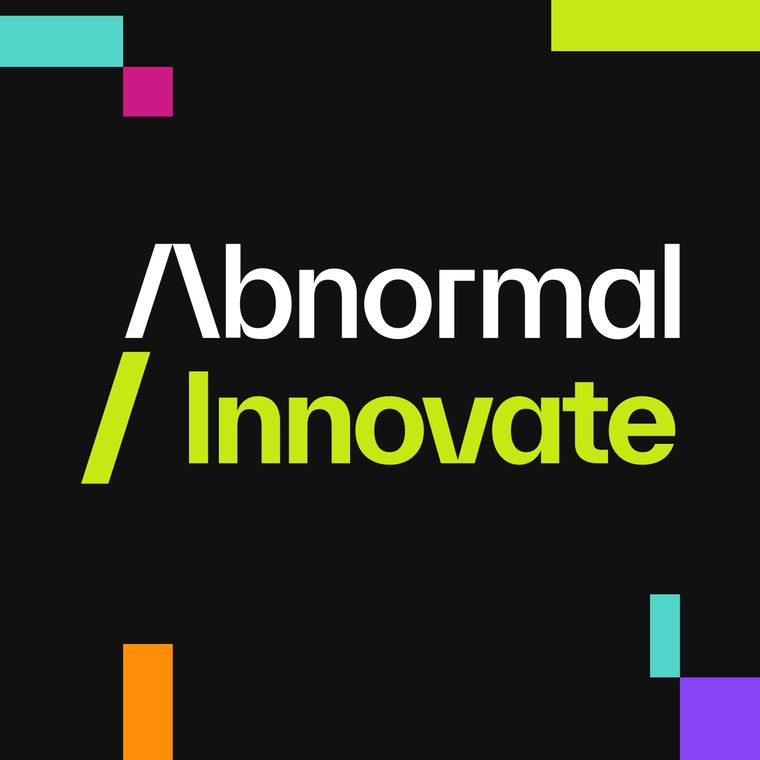Secure Messaging Solutions: Protect Sensitive Communications Without Slowing Down Work
Discover essential secure messaging solutions to boost business email security, protect sensitive communications, and ensure compliance in the digital age.
Abnormal AI
Secure messaging solutions are a necessity for today’s businesses that are facing sophisticated cyber threats.
When organizations rely on secure message solutions that enable early detection, they can cut breach costs significantly. According to a study by IBM, breaches uncovered by internal security teams averaged $4.55 million, compared to $5.53 million when revealed by attackers—underscoring the financial impact of proactive security.
Enterprise messaging demands serious attention to compliance, integration with existing systems, and advanced protection that doesn't slow your team down.
What Are Secure Messaging Solutions for Enterprises?
Secure messaging solutions for enterprises are platforms designed to protect sensitive business communications through encryption, access controls, and compliance-ready infrastructure.
Unlike basic email or chat tools, these solutions offer built-in safeguards that help enterprises maintain security without slowing down collaboration.
Core Security Features
Enterprise-grade secure messaging platforms include a set of foundational security mechanisms that are essential for mitigating modern threat vectors such as data interception, unauthorized access, and insider misuse, such as:
End-to-End Encryption (E2EE): Encrypts messages from sender to recipient, ensuring only authorized users can access content. Email encryption is a critical layer for stopping interception or tampering.
Strong Authentication: Multi-factor and certificate-based authentication limit unauthorized access—even if credentials are compromised.
Message Ephemerality: Self-expiring messages reduce the risk of sensitive data lingering in inboxes or archives.
Secure Key Management: Manages encryption keys securely throughout the communication lifecycle.
Zero-Knowledge Architecture: Ensures user privacy by keeping sensitive content hidden from the platform itself, which supports privacy-first threat detection.
Forward Secrecy: Protects past communications even if a long-term encryption key is exposed.
These core features work together to create a security-first messaging environment, where both data confidentiality and user integrity are protected by design. Their presence ensures that sensitive communications remain secure across devices and networks, even in the face of advanced threats.
Compliance and Regulatory Alignment
In regulated industries, messaging platforms need to protect data and help organizations meet legal and compliance obligations. Enterprise-ready solutions typically include tools and configurations to support sector-specific mandates:
GDPR Requirements: If you handle EU citizen data, you need features like data minimization, right to erasure, and access controls to meet GDPR compliance standards.
HIPAA Considerations: Healthcare organizations need strong encryption, access controls, and detailed audit trails for all PHI-related communications.
Financial Regulations: Banks and financial firms must satisfy FINRA and SEC requirements through message archiving, e-discovery, and audit logging.
Data Sovereignty: Many regulated industries need data stored within specific geographic boundaries, requiring flexible deployment options.
Supporting compliance out of the box reduces the burden on IT and legal teams while building customer and stakeholder trust. A platform that aligns with major frameworks like GDPR and HIPAA enables enterprises to operate globally with confidence.
Integration with Enterprise Infrastructure
Adoption of secure messaging is only successful when it integrates cleanly with existing enterprise tools and processes. Scalable platforms offer interoperability that minimizes disruption and supports operational efficiency:
Directory Services: Syncs with AD and LDAP for seamless user provisioning.
SSO Integration: Supports single sign-on to reduce login friction and strengthen authentication.
APIs: Allow secure messaging to plug into existing workflows or CRMs.
Data Loss Prevention (DLP) Tools: Prevent data leakage by integrating with cloud email security solutions.
Mobile Device Management (MDM): Extends messaging security to mobile devices.
Seamless integration ensures that security does not come at the cost of usability. By fitting naturally into existing infrastructure, secure messaging platforms support rapid adoption, consistent user experience, and lower administrative overhead.
Choosing the Right Architecture for Secure Messaging Solutions
Your architecture choice directly impacts security, scalability, and operational efficiency. Each approach offers distinct advantages based on your specific requirements, whether you choose on-premises solutions or embrace cloud-based email platforms.
On-Premises Deployments of Secure Messaging Solutions
On-premises secure messaging solutions give you maximum control when you have specialized security needs:
Data Sovereignty: If you handle highly sensitive data or face strict data localization laws, on-premises deployment gives you complete control over storage and processing.
Legacy Integration: Companies with significant investments in existing systems often find on-premises solutions easier to connect with their infrastructure.
Isolated Networks: Defense contractors and government agencies requiring air-gapped or isolated networks may need on-premises deployments to meet security requirements.
The tradeoffs are significant:
Operational Burden: You'll need dedicated resources and expertise to maintain physical infrastructure, apply security patches, and scale across locations.
Limited Scalability: Growth often means substantial hardware investments and implementation time, creating bottlenecks when you need to expand.
Update Challenges: Security patches and feature updates require manual implementation, potentially leaving you vulnerable during deployment windows.
On-premises secure messaging solutions make sense in specific scenarios but struggle to deliver the agility and collaboration modern businesses demand.
Cloud-Native Secure Messaging Platforms
Most organizations now choose cloud-native secure messaging solutions, such as cloud email security solutions, for compelling reasons:
Global Availability: Cloud platforms offer built-in redundancy and geographic distribution, ensuring reliable message delivery regardless of location.
Operational Agility: New features and security updates deploy quickly without disrupting operations.
Automatic Security Updates: Cloud providers handle patches and updates, so your systems always run the latest, most secure versions.
Built-in Resiliency: Cloud solutions typically include comprehensive backup and failover, enhancing business continuity.
Advanced Threat Protection: Cloud platforms leverage AI and machine learning for sophisticated security capabilities that most on-premises solutions can't match.
The Abnormal messaging security platform demonstrates these benefits, analyzing communication patterns across over 40,000 signals and catching threats that traditional tools miss.
Cloud-native design provides the most effective way to scale messaging security solutions without the headaches of hardware management and rigid perimeter controls.
Hybrid Architectures and Transitional Models
Some organizations require hybrid architectures to balance specific requirements:
Regulatory Compliance: Certain workloads may need to stay on-premises due to regulations, while less sensitive communications can leverage cloud benefits.
Phased Migration: You can gradually transition from legacy systems to cloud platforms, minimizing disruption and managing change effectively.
Specialized Use Cases: Specific applications or data sets may require on-premises processing while integrating with cloud messaging for broader communication.
These benefits come with challenges:
Increased Complexity: Managing data synchronization and access control across environments requires sophisticated skills and tools.
Security Consistency: Maintaining uniform security controls between cloud and on-premises components becomes increasingly difficult.
Higher Management Overhead: Teams must master both cloud and on-premises technologies, potentially increasing operational costs.
Modern platforms address these challenges through simplified integration.
For example, Abnormal's solution connects without modifying existing email infrastructure, establishing read-only connections to Microsoft 365 or Google Workspace for comprehensive security analysis without disrupting operations.
Building and Future-Proofing a Secure Messaging Program
Creating a resilient secure messaging program requires strategic planning across multiple dimensions to protect communications today while preparing for tomorrow's threats.
Design a Secure Messaging Architecture
Your secure messaging architecture needs multiple layers of defense tailored to messaging-specific threats:
Network Segmentation and Zero Trust Security: Isolate sensitive communication channels from broader corporate networks to limit potential breach impacts.
Robust Key Management: Implement thorough practices for key generation, storage, rotation, and recovery to maintain encryption integrity.
Incident Response Integration: Connect messaging security with broader incident response workflows for coordinated threat management.
Reference Architectures: Leverage industry frameworks like the NIST Cybersecurity Framework to establish secure messaging solutions based on proven practices.
Drive Adoption and Governance at Scale
Even the most sophisticated secure messaging solutions fail without user adoption and effective governance:
Targeted Training: Create role-specific training that demonstrates how secure messaging enhances rather than hinders productivity.
Phased Implementation: Roll out secure messaging solutions gradually, incorporating feedback to improve user experience as you expand.
Role-Based Controls: Implement granular permissions that limit sensitive information exposure based on legitimate business needs.
Centralized Administration: Deploy unified management tools that simplify policy enforcement and monitoring.
Adaptive Policies: Create governance that balances security requirements with practical usability to encourage compliance.
Track adoption through metrics like active usage rates, policy compliance percentages, and secure versus unsecured communication ratios to measure program effectiveness.
Integrate Threat Intelligence and Automated Response
Modern secure messaging solutions leverage real-time threat data and automated responses:
Threat Feed Integration: Connect messaging security with threat intelligence sources to identify emerging risks before they impact your environment.
Behavioral Analysis with AI: Monitor communication patterns to detect anomalies that might indicate compromise or insider threats.
Automated Remediation: Implement response workflows that contain threats without manual intervention, reducing potential exposure time.
Abnormal's AI-powered security platform exemplifies how AI enhances cybersecurity, analyzing thousands of signals across communication channels to identify and remediate sophisticated attacks.
Organizations using these technologies report significant security improvements, with companies like ADT achieving zero fraud losses across multiple years.
Prepare for Post-Quantum and Advanced Threats
Future-proofing your secure messaging solutions means anticipating emerging threats, including AI-enabled cyberattacks and quantum computing advances:
Quantum-Resistant Encryption: Start evaluating and planning for post-quantum cryptographic algorithms as quantum computing advances.
Implementation Timelines: Create realistic schedules for cryptographic upgrades that balance security needs with operational requirements.
Third-Party Validation: Conduct regular security audits and penetration testing to identify vulnerabilities before attackers do.
Continuous Security Validation: Implement ongoing testing to verify secure messaging controls remain effective against evolving threats.
Organizations that proactively address these considerations maintain messaging security resilience even as threats evolve.
Measure Security and Operational Impact
Demonstrating the value of secure messaging solutions requires clear metrics, as highlighted in the latest email threat report:
Security Incident Reduction: Track messaging-related security events before and after implementation.
Compliance Violations: Monitor regulatory infractions and their severity over time.
Attack Prevention: Measure blocked phishing attempts and other thwarted messaging-based attacks.
User Behavior Improvements: Assess changes in risky communication practices following implementation.
Operational Efficiency: Calculate time savings from streamlined secure communication processes.
These metrics justify continued investment by showing both security improvements and business benefits.
Stay Ahead With Emerging Messaging Innovations
Maintaining security leadership means tracking emerging technologies in secure messaging solutions:
AI-Driven Security: Evaluate solutions using AI in cybersecurity to detect sophisticated threats across communication channels, including advances like Zero Shot LLM.
Blockchain Verification: Consider distributed ledger technologies for message integrity verification in high-assurance environments.
Zero-Knowledge Systems: Explore privacy-enhancing technologies that minimize data exposure while maintaining security.
Regulatory Evolution: Monitor changing compliance requirements that impact messaging security strategies.
Abnormal's autonomous AI technology showcases these innovations, detecting malicious content across collaboration platforms like Slack, Microsoft Teams, and Zoom through behavioral analysis rather than traditional signatures.
Choose the Right Secure Messaging Solution
Upgrading secure messaging is essential to protecting sensitive data without disrupting workflows. The right solution should provide layered security, support compliance, and integrate seamlessly with your existing tools.
Focus on these critical priorities:
End-to-End Encryption: Ensure messages remain secure from sender to recipient.
Seamless Integration: Choose solutions that connect easily with your current environment.
Compliance Readiness: Support industry-specific regulations like GDPR, HIPAA, and SOX.
User-First Experience: Encourage adoption without compromising security.
AI-powered Threat Detection: Stop advanced attacks that traditional tools miss.
Implement these best practices for immediate results:
Conduct thorough risk assessments to identify your specific security requirements.
Develop clear implementation roadmaps with measurable milestones.
Provide comprehensive training tailored to different user roles.
Regularly review access controls to maintain least-privilege principles.
Establish monitoring systems to detect anomalies and generate compliance reports.
Match your messaging security to your organization's maturity level:
Early-Stage: Implement fundamental security controls and conduct baseline assessments.
Mid-Level: Deploy AI-driven threat detection and integrate messaging security with broader defenses.
Advanced: Implement behavioral analysis and cross-platform correlation for sophisticated threat hunting.
The right secure messaging solutions depend on your organization's unique risk profile. Solutions like Abnormal deliver AI-powered threat detection that integrates with existing platforms while providing comprehensive visibility across communication channels—with proven results.
Ready to enhance your secure messaging solutions with AI-driven protection? See how Abnormal can protect your business today.
Related Posts

July 31, 2025

July 30, 2025

July 28, 2025
Get the Latest Email Security Insights
Subscribe to our newsletter to receive updates on the latest attacks and new trends in the email threat landscape.